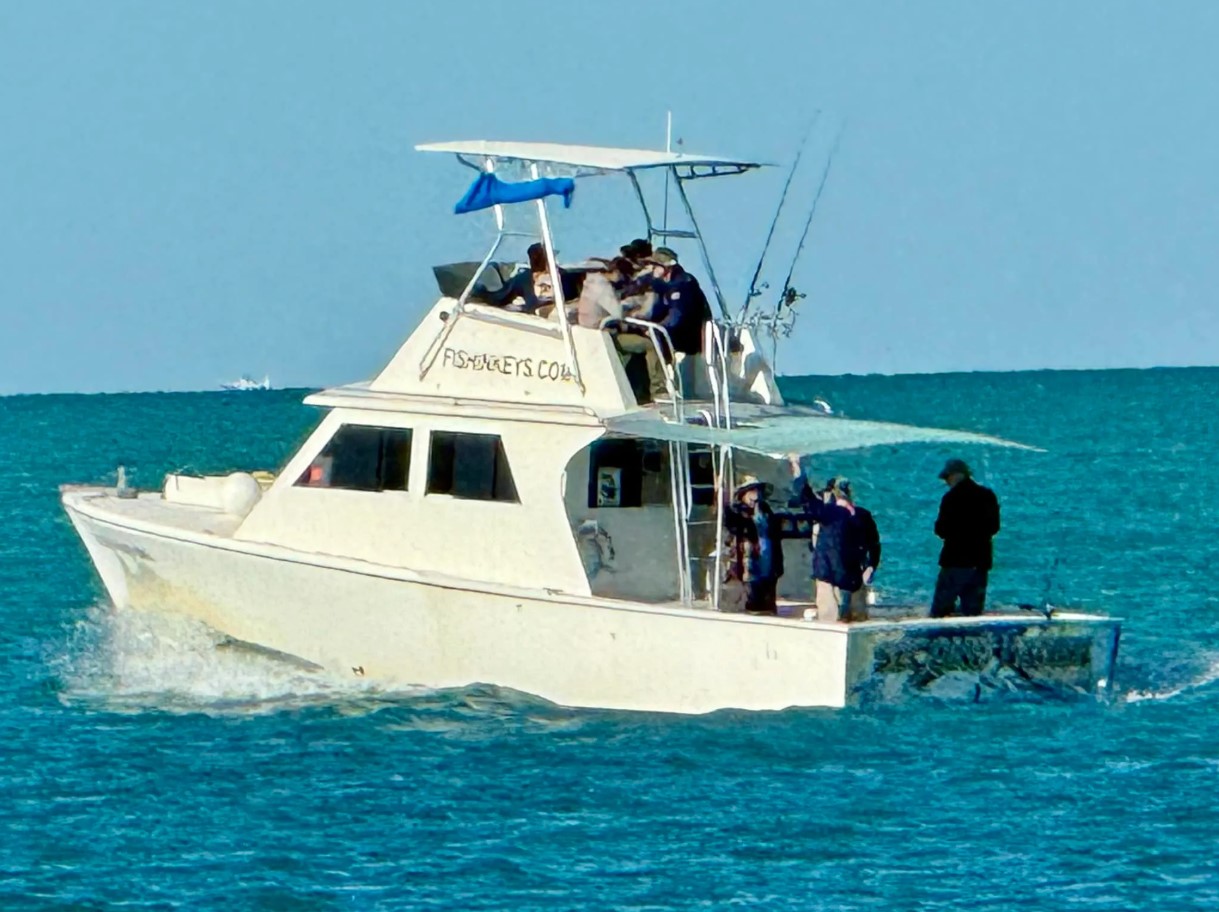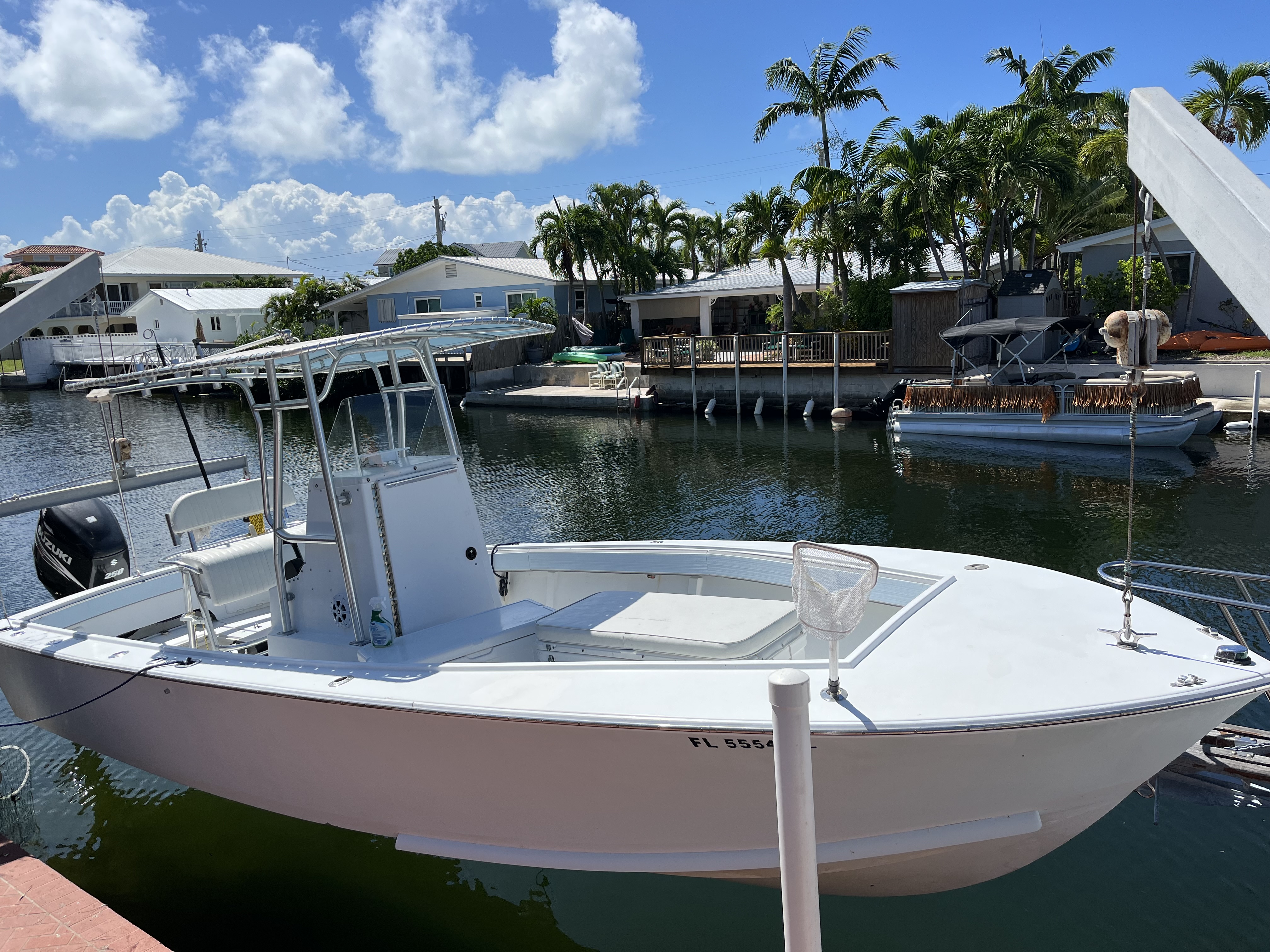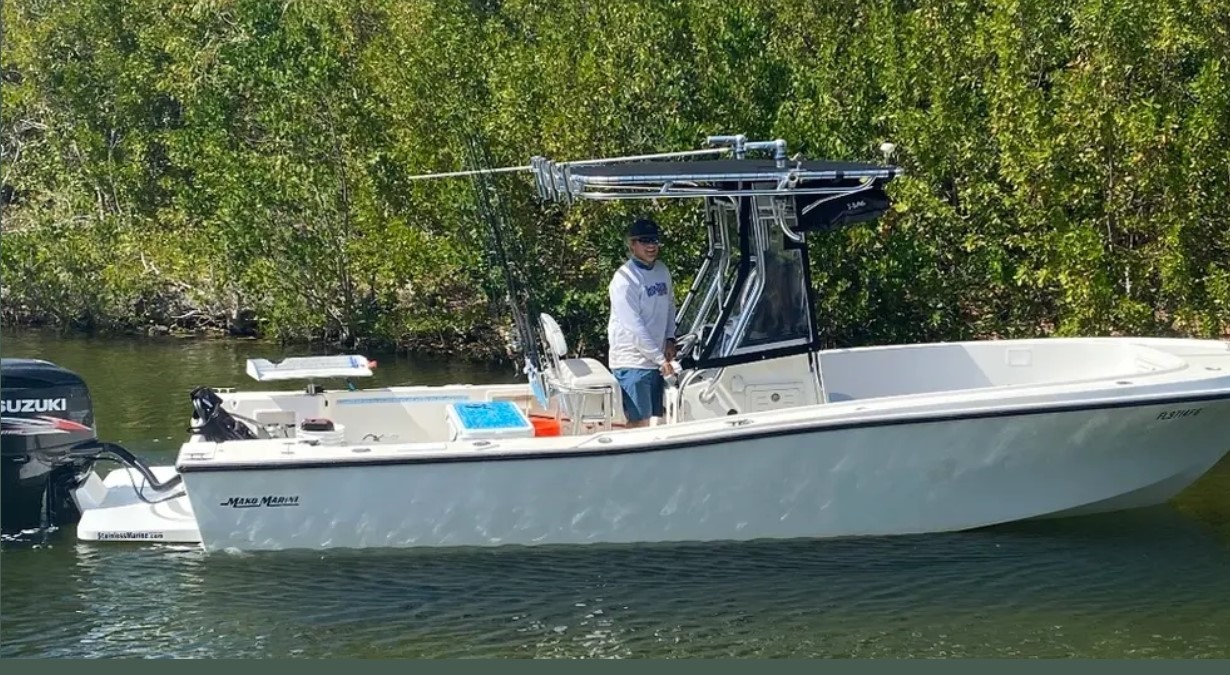Deep Sea, Nearshore Fishing in Key West
Swordfish / Trolling
Deep Sea, Nearshore Fishing in Key West
4 Hour Light Tackle Reef/Wreck
Inshore, Deep Sea Fishing in Key West
Full Day Exotic Reef Fishing
Deep Sea, Nearshore Fishing in Key West
Marquesas Key Fishing Adventure
Inshore, Deep Sea, Nearshore in Key West
Hidden Gems Of The Dry Tortugas
Inshore, Nearshore, Jetty in Key West
Key West Inshore, Nearshore, Jetty
Inshore, Flats Fishing in Key West
Lobstering Trip
Deep Sea, Nearshore, Jetty in Key West
Key West Offshore - '27 CC
Inshore, Nearshore Fishing in Big Pine Key
Inshore Fishing Trip
Deep Sea, Nearshore Fishing in Little Torch Key
4-6 Hour Spearfishing/Lobster
We started Captain Experiences to make it easy to book fishing and hunting guides around the world. With over 2,000 Damn Good Guides, our platform makes finding and booking a trip seamless. Head here to check out our trips.
What is a Goliath Grouper?
The goliath grouper is the largest grouper species and in the Atlantic Ocean can be found from Florida to Brazil. This titanic fish can grow over eight feet long and weigh up to 800 pounds, but surprisingly, these monster fish generally live in less than 150 feet of water which is shallow for a grouper. Goliath grouper have elongated bodies which can range in color from brown and grey to green with black dots on their fins, body, and head. The head of this big fish is wide, tapered, and slightly flattened.

Goliath Grouper Management
Goliath grouper fishing has been banned in the Atlantic Ocean including the Gulf of Mexico since 1990. Before the ban, goliath grouper were open to harvest but low reproduction rates combined with slow growth rates meant these fish couldn’t keep up with fishing pressure causing the population to experience a significant decline. While population studies have shown different results, goliath grouper have been classified as critically endangered and vulnerable.
Goliath Grouper Fishing
While targeting goliath grouper is still illegal, anglers unintentionally catch these giants while targeting snapper and other grouper species. Goliath grouper primarily feed on shrimp, crab, and fish. Before fishing for them was banned, anglers used a variety of baits to catch them from whole small stingrays to large fish. Because they are opportunistic, any small sea creature would probably be effective. Catching one of these behemoths is not easy and has been compared to reeling in a small car. If you happen to catch a goliath grouper it needs to be released as quickly as possible.

Florida Goliath Grouper
The Florida Fish and Wildlife Conservation Commission has passed regulations that will reopen fishing for goliath grouper for the first time in 32 years. The new rules require anglers looking to catch a goliath grouper to get a tag. Harvest will be limited to 200 fish and anglers will only be allowed to keep one fish between 24 and 36 inches. The new season was voted on and ratified on March 3rd, 2022 but the season will not open until March of 2023. Florida’s decision to lift the ban on fishing for goliath grouper has been controversial since it was proposed because of how vulnerable this species is to extinction.

Handling Goliath Grouper
If you’re lucky enough to draw a tag for a goliath grouper or happen to hook one by accident, here are the guidelines for handling one of these giant fish if you intend to release it. Once the fish is at the boat you’re required to release the fish as quickly as possible to increase its chances of survival. Delaying the release of a goliath grouper to take measurements or photos is prohibited according to the FWC website. Photos of the fish are allowed to be taken but only while the fish is being released. As a general rule, any large fish should not be removed from the water because their skeletal structure is not able to support their body out of the water. Smaller grouper can be removed from the water to help remove the hook but it depends on the situation.
Joey Butrus
Updated on June 22, 2023

June 22, 2022

August 21, 2023

November 15, 2023

May 13, 2024

January 19, 2021
Related Articles
November 28, 2022
June 6, 2024
Featured Locations
- Fishing Charters Near Me
- Austin Fishing Guides
- Biloxi Fishing Charters
- Bradenton Fishing Charters
- Cabo San Lucas Fishing Charters
- Cancun Fishing Charters
- Cape Coral Fishing Charters
- Charleston Fishing Charters
- Clearwater Fishing Charters
- Corpus Christi Fishing Charters
- Crystal River Fishing Charters
- Dauphin Island Fishing Charters
- Daytona Beach Fishing Charters
- Destin Fishing Charters
- Fort Lauderdale Fishing Charters
- Fort Myers Fishing Charters
- Fort Walton Beach Fishing Charters
- Galveston Fishing Charters
- Gulf Shores Fishing Charters
- Hatteras Fishing Charters
- Hilton Head Fishing Charters
- Islamorada Fishing Charters
- Jacksonville Fishing Charters
- Jupiter Fishing Charters
- Key Largo Fishing Charters
- Key West Fishing Charters
- Kona Fishing Charters
- Lakeside Marblehead Fishing Charters
- Marathon Fishing Charters
- Marco Island Fishing Charters
- Miami Fishing Charters
- Montauk Fishing Charters
- Morehead City Fishing Charters
- Naples Fishing Charters
- New Orleans Fishing Charters
- New Smyrna Beach Fishing Charters
- Ocean City Fishing Charters
- Orange Beach Fishing Charters
- Panama City Beach Fishing Charters
- Pensacola Fishing Charters
- Pompano Beach Fishing Charters
- Port Aransas Fishing Charters
- Port Orange Fishing Charters
- Rockport Fishing Charters
- San Diego Fishing Charters
- San Juan Fishing Charters
- Sarasota Fishing Charters
- South Padre Island Fishing Charters
- St. Augustine Fishing Charters
- St. Petersburg Fishing Charters
- Tampa Fishing Charters
- Tarpon Springs Fishing Charters
- Venice Fishing Charters
- Virginia Beach Fishing Charters
- West Palm Beach Fishing Charters
- Wilmington Fishing Charters
- Wrightsville Beach Fishing Charters
































